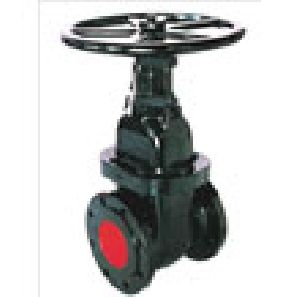
Sluice Valve
The gate valve, also known as a sluice valve, is a valve that opens by lifting a round or rectangular gate/wedge out of the path of the fluid. The distinct feature of a gate valve is the sealing surfaces between the gate and seats are planar, so gate valves are often used when a straight-line flow of fluid and minimum restriction is desired. The gate faces can form a wedge shape or they can be parallel. Gate valves are primarily used to permit or prevent the flow of liquids, but typical gate valves shouldn't be used for regulating flow, unless they are specifically designed for that purpose. Because of their ability to cut through liquids, gate valves are often used in the petroleum industry. On opening the gate valve, the flow path is enlarged in a highly nonlinear manner with respect to percent of opening. This means that flow rate does not change evenly with stem travel. Also, a partially open gate disk tends to vibrate from the fluid flow. Most of the flow change occurs near shutoff with a relatively high fluid velocity causing disk and seat wear and eventual leakage if used to regulate flow. Typical gate valves are designed to be fully opened or closed. When fully open, the typical gate valve has no obstruction in the flow path, resulting in very low friction loss. Gate valves are characterised as having either a rising or a nonrising stem. Rising stems provide a visual indication of valve position because the stem is attached to the gate such that the gate and stem rise and lower together as the valve is operated. Nonrising stem valves may have a pointer threaded onto the upper end of the stem to indicate valve position, since the gate travels up or down the stem on the threads without raising or lowering the stem. Nonrising stems are used underground or where vertical space is limited. Bonnets provide leakproof closure for the valve body. Gate valves may have a screw-in, union, or bolted bonnet. Screw-in bonnet is the simplest, offering a durable, pressure-tight seal. Union bonnet is suitable for applications requiring frequent inspection and cleaning. It also gives the body added strength. Bolted bonnet is used for larger valves and higher pressure applications. Another type of bonnet construction in a gate valve is pressure seal bonnet. This construction is adopted for valves for high pressure service, typically in excess of 15 MPa (2250 psi). The unique feature about the pressure seal bonnet is that the body - bonnet joints seals improves as the internal pressure in the valve increases, compared to other constructions where the increase in internal pressure tends to create leaks in the body-bonnet joint.Gate valves may have flanged ends which are drilled according to pipeline compatible flange dimensional standards. Gate valves are typically constructed from cast iron, ductile iron, cast carbon steel, gun metal, stainless steel, alloy steels, and forged steels.
...more
hydro power station
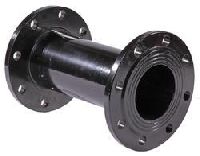
flanged pipe
Ductile iron double flanged pipes are most suitable for over ground pipelines like portions of Pipelines on Pillars Pedestals for Rivers Canal or Road crossing and bridges. In these pipes the flanges are flat rings around the end of pipes which mate with an equivalent flange from another pipe, the two being held together by bolts usually passed through holes drilled through the flanges. A deformable gasket, usually electrometric,
...more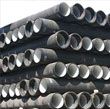
ductile iron spun pipe
Ductile Iron Spun Pipe involve a normal pipe end, the spigot, being inserted into the socket or bell of another pipe or fitting with a seal being made between the two within the socket. Normal spigot and socket joints do not allow direct metal to metal contact with all forces being transmitted through the electrometric seal. They can consequently flex and allow some degree of rotation, allowing pipes to shift and relieve stresses imposed by soilmovement. The corollary is that unrestrained spigot and socket joints transmitessentially no compression or tension along the axis of the pipe and little shear. Any bends, tees or valves therefore require either a restrained joint or, more commonly, thrust blocks, which transmit the forces as compression into the surrounding soil. Thus, Spun Pipes have higher tensile strength, yield strength, ductility and impact resistance which are the reasons why the use of Ductile Iron Pipes has grown up at a rapid rate. We deal in this product at an all India Level having tie ups with the major manufacturers. Also to meet the demands of customers, we keep stock of the same at all the time so that we can give a faster service so that customers do not have to wait for the material to come from the plant.
...more
Ductile Iron Pipe Fittings
Our team is managed by highly skilled professionals which is well-versed with every aspect related to the production of Different Type of Pipes and Valves. The continuous efforts of these experts have proved to be beneficial for the success of the company. Our entire team has a number of employees which work in coordination with each other which have helped us in designing and developing the product range as per the specific requirements of our clients. All our team members work in a close coordination with each other and market the product efficiently.
...more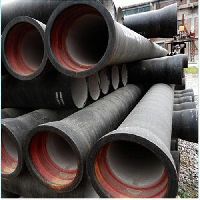
Ductile Iron Pipe
Ductile Iron Spun Pipe involve a normal pipe end, the spigot, being inserted into the socket or bell of another pipe or fitting with a seal being made between the two within the socket. Normal spigot and socket joints do not allow direct metal to metal contact with all forces being transmitted through the electrometric seal. They can consequently flex and allow some degree of rotation, allowing pipes to shift and relieve stresses imposed by soilmovement. The corollary is that unrestrained spigot and socket joints transmitessentially no compression or tension along the axis of the pipe and little shear. Any bends, tees or valves therefore require either a restrained joint or, more commonly, thrust blocks, which transmit the forces as compression into the surrounding soil. Thus, Spun Pipes have higher tensile strength, yield strength, ductility and impact resistance which are the reasons why the use of Ductile Iron Pipes has grown up at a rapid rate. We deal in this product at an all India Level having tie ups with the major manufacturers. Also to meet the demands of customers, we keep stock of the same at all the time so that we can give a faster service so that customers do not have to wait for the material to come from the plant.
...more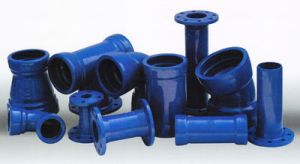
Ductile Iron Fittings
We deal in Ductile Iron Fittings confirming to IS : 9523 suitable for Push on Joint, Flanged Joint & Mechanical joint. Push-on Joint needs only one gasket but Mechanical Joint needs follower gland, gasket and tee headed bolts and nuts. With D.I. Fittings, weights have come down considerably. Our Ductile Iron Fittings conforms to the national & international quality standards. Our Ductile Iron Fittings has a high tensile strength which is available in various dimensions. We have different fittings available with us- Tees, Bends, Tapers, Flange Socket Piece, Flange Spigot (Tail Piece) and Flanges.
...more
ductile iron fitting
We deal in Ductile Iron Fittings confirming to IS : 9523 suitable for Push on Joint, Flanged Joint & Mechanical joint. Push-on Joint needs only one gasket but Mechanical Joint needs follower gland, gasket and tee headed bolts and nuts. With D.I. Fittings, weights have come down considerably. Our Ductile Iron Fittings conforms to the national & international quality standards. Our Ductile Iron Fittings has a high tensile strength which is available in various dimensions. We have different fittings available with us- Tees, Bends, Tapers, Flange Socket Piece, Flange Spigot (Tail Piece) and Flanges.
...more
ductile iron double flanged pipe
Ductile iron double flanged pipes are most suitable for over ground pipelines like portions of Pipelines on Pillars / Pedestals for Rivers / Canal or Road crossing and bridges. In these pipes the flanges are flat rings around the end of pipes which mate with an equivalent flange from another pipe, the two being held together by bolts usually passed through holes drilled through the flanges. A deformable gasket, usually electrometric, placed between raised faces on the mating flanges provides the seal. The predominant wall material is ductile iron, a spheroidized graphite cast iron, although an internal cement mortar lining usually serves to inhibit corrosion from the fluid being distributed, and various types of external coating are used to inhibit corrosion from the environment. Ductile iron pipe is a direct development of earlier cast iron pipe which it has superseded. Ductile iron has proven to be a better pipe material, being stronger and more fracture resistant; however, like most ferrous materials, it is susceptible to corrosion and retains some brittle characteristics. Relatively recent developments such as polyethylene sleeving and/or zinc and polymer coatings have done much to mitigate corrosion concerns.
...more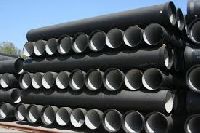
Ductile Iron
We deal in Ductile Iron Fittings confirming to IS : 9523 suitable for Push on Joint, Flanged Joint & Mechanical joint. Push-on Joint needs only one gasket but Mechanical Joint needs follower gland, gasket and tee headed bolts and nuts. With D.I. Fittings, weights have come down considerably. Our Ductile Iron Fittings conforms to the national & international quality standards. Our Ductile Iron Fittings has a high tensile strength which is available in various dimensions. We have different fittings available with us- Tees, Bends, Tapers, Flange Socket Piece, Flange Spigot (Tail Piece) and Flanges.
...more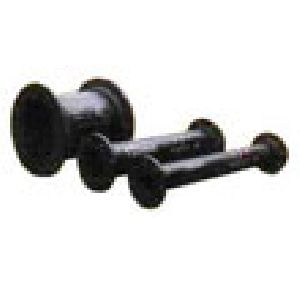
Cast Iron Spun Pipe
Cast Iron Spun pipe is made as per IS 1536. These are used for transportation of drinking water as well as for sewerage. These pipes are coated with black bitumen paint which helps to prevent corrosion and also stops the rusting of the pipe. These are so widely used because it: quick change over of tool sets that reduces time consumption and increases productivity, High quality solenoid and hydraulics and Lower power consumption.
...more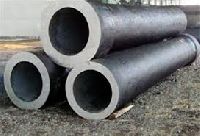
Cast Iron Pipes
The CI Flanges are tightened or Screwed fit on either side of C.I. Spun pipes. These pipes are coated with Bitumen paint on both the sides that is inside as well as outside. The flanges are generally supplied with flat face but however if required raised flanges may also be delivered. These pipes are used in mines, fire fighting systems, ash disposal in Power Plants, chemical industries, for water supply in: Overhead Water Tanks, Pumping stations, Underground Mains, River Crossing, Hill Tracks, Sandy area, etc. and is also used in place of vertical pipe lines.
...more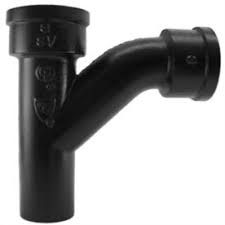
Cast Iron Fitting
Cast Iron Flange fittings are as per IS: 1538 which are used with Cast Iron Flanged Pipes,Cast Iron Socketted Fittings are as per IS: 1538 which are used with Cast Iron Socket and Spigot Pipes,Cast Iron Mechanical Joint Fittings are as per IS: 13382 which are used with Cast Iron and Ductile Iron Socket and Spigot Pipes.
...more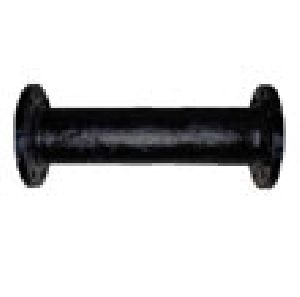
Cast Iron Double Flanged Pipe
The CI Flanges are tightened or Screwed fit on either side of C.I. Spun pipes. These pipes are coated with Bitumen paint on both the sides that is inside as well as outside. The flanges are generally supplied with flat face but however if required raised flanges may also be delivered. These pipes are used in mines, fire fighting systems, ash disposal in Power Plants, chemical industries, for water supply in: Overhead Water Tanks, Pumping stations, Underground Mains, River Crossing, Hill Tracks, Sandy area, etc. and is also used in place of vertical pipe lines.
...moreBe first to Rate
Rate ThisOpening Hours